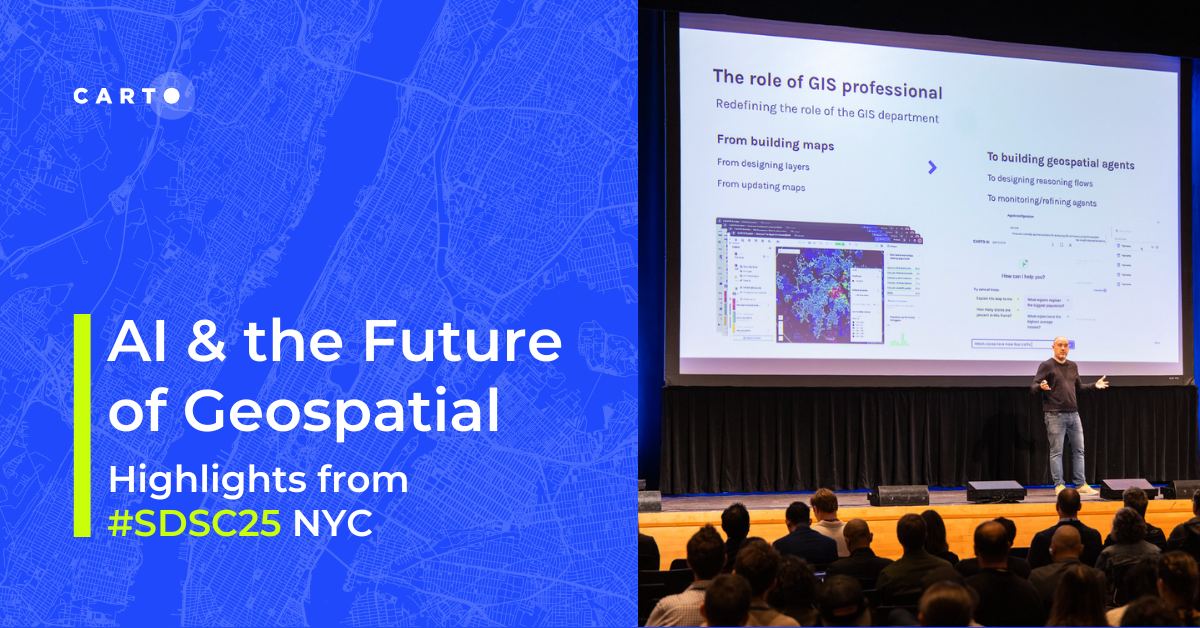Procedural joins CARTO

We are happy to announce that Procedural Ltd the company behind the popular open source 3D mapping library Procedural GL will join CARTO. The team behind the technology will help take the visualization capabilities of the CARTO platform to the next level.
CARTO has open source as a key part of its DNA taking a leading role as part of the vis.gl steering committee and as a major source contributor to the headline project deck.gl. It is the deck.gl library that powers the visualizations in CARTO’s Spatial Analytics platform delivering a rich set of visualizations from scatterplots to heat-maps that help customers instantly understand the geolocation data in their data warehouses.
3D First Mapping
Procedural GL was conceived as a way of making 3D mapping seamless and accessible on the web providing a user experience where a 3D map loads as quickly as a static image rather than being a heavy “application” which burdens the user with a loading spinner while it initializes. Procedural GL achieves this by its unique GPU-first architecture where computationally intensive operations are handled by algorithms on the graphics card allowing the CPU to use its resources on rendering the web page. This approach is especially effective on mobile devices where the CPU is underpowered relative to the GPU.
Most geospatial datasets are flat in nature consisting only of longitude and latitude. By moving processing to the GPU Procedural GL makes it possible to enhance such 2D data with an elevation component at practically zero cost. The technology is proven in the field helping hundreds of thousands of users better understand the world; from orienting themselves in a ski resort to visualizing the surroundings of a hike.
Combined with the experience and talent of CARTO’s Professional Services team this technology will let our customers quickly easily and cost-effectively build solutions which were previously unimaginable. Over the next few weeks CARTO will be rolling out the enhancements as part of its CARTO cloud native Location Intelligence platform and professional services offering.
Procedural founder Felix Palmer will join CARTO as Principal Rendering Engineer with a particular focus on the deck.gl and Procedural GL libraries. As well as improving the visualizations powering CARTO he will work on the core of deck.gl taking advantage of the latest browser APIs such as WebGPU to push performance to the next level. We have already collaborated in the past with great success - for example in building the integration between Google’s WebGL Maps and deck.gl - and look forward to pushing the possibilities of map rendering to new heights.
As we say here in Spain Vamos!
Story of Two Libraries
Deck.gl is first and foremost a data-visualization library that supports geospatial functionality - with the core focus being on a rich set of interoperable layers that can be used as building blocks in creating compelling visualizations. The layers can often have a 3D component such as extruded polygons but are generally not coupled to the assumption that they will be displayed on top of a map let alone a map that supports 3D landscapes. It is for this reason that deck.gl supports seamless integration with a number of popular base-map libraries rather than attempting to provide a fully-featured base-map solution itself.

Procedural GL on the other hand is built from the ground up with 3D support everywhere and thus is closer to a virtual globe library than an abstract data visualization library. This is reflected in the fact that the primary data source for Procedural GL is raster (imagery and elevation) data while for deck.gl it tends to be vector data. Vector data is then used as an overlay atop this 3D world to create visualizations and to build applications. Procedural GL is also aimed at a less technical end-user and as such has intuitive mobile optimized touch controls rather than primarily providing a desktop keyboard+mouse interface.

Thus deck.gl is best suited to visualizations where it is important to focus on the data with the base-map acting as backdrop that provides geospatial context while Procedural GL provides a believable recreation of the world which is then enhanced with an overlay of geospatial data. They each have their architectures developed with these design goals in mind and as always is the case in software development which is better is use-case dependent.
About CARTO
From smartphones to connected cars location data is changing the way we live and the way we run businesses. Everything happens somewhere but visualizing data to see where things are isn’t the same as understanding why they happen there. CARTO is the world’s leading cloud native Location Intelligence platform enabling organizations to use spatial data and analysis for more efficient delivery routes better behavioral marketing strategic store placements and much more.
Data Scientists Developers and Analysts use CARTO to optimize business processes and predict future outcomes through the power of Spatial Data Science.
















.png)
